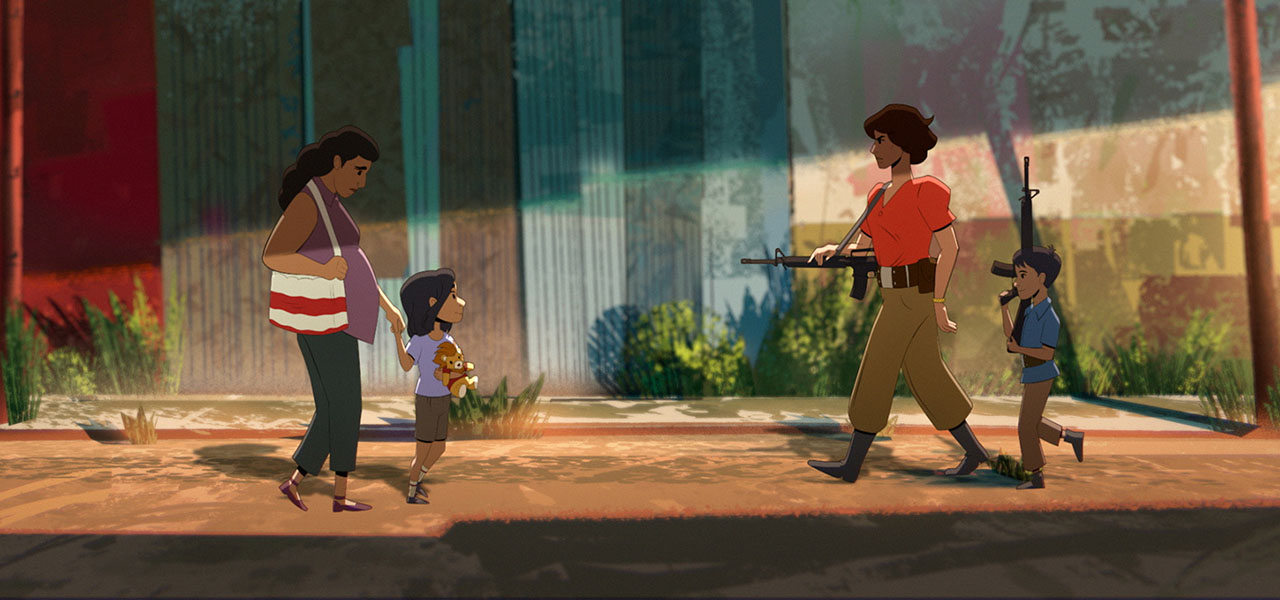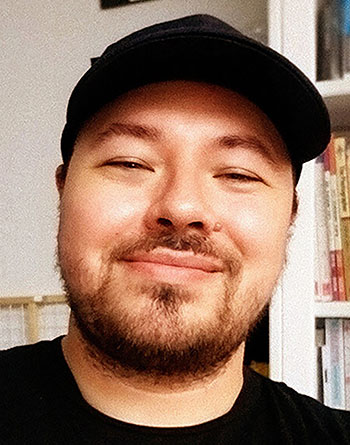

2025 Oscars Short Film Contenders: ‘Remember Us’ Director Pablo Leon
Cartoon Brew is putting the spotlight on animated short films that have qualified for the 2025 Oscars.
In this installment, we’re looking at Remember Us from filmmaker Pablo Leon. The short earned its Oscars qualification by winning best animated short film in Spanish at Animayo.
Through this uncompromising 2d short, a journalist documents the experiences of people who lived through the tragic 12-year-long Salvadoran civil war in the 1980s, exploring themes of childhood loss, violence against women, and the indigenous population, and regaining a sense of hope for the future that spans over three generations. The film is produced by Kojtanchanej, 100 Volcanoes, Antigravity Academy, Ocelotl, StreetsAhead and Dinamita Animación.
Cartoon Brew: Putting forward that part of Salvadoran history on screen, a history which is mostly unspoken, how has the film been received by local communities and have you had feedback from people who experienced this conflict?

Pablo Leon: People have mentioned learning about the conflict for the first time after watching the film. Others have told us this has become a bridge to talk to their families about their family history, and about the war for the first time. It has sparked curiosity amongst the new generation of Salvadoran Americans to talk about it with their parents or grandparents that lived through these years.
What has also been interesting is the way the stories and film have connected with people outside of El Salvador, especially from other countries in Latin America who have a shared experience of war and violence. We have received messages from people who have seen the short film that have said that the themes have hit close to home, as it reminded them of the violence during the dictatorship regime in Dominican Republic, or the civil war and armed conflict in Colombia. In my head, I feel strongly that talking about the past restores people’s dignity and all those that we’ve lost, so the reception has only reinforced that in me, and I’m incredibly honored that our film can be used as a conversation starter.
What was it about this story or concept that connected with you and compelled you to direct the film?
When I came to the United States from Guatemala at the end of the ’90s, virtually nobody knew that Central America had just gone through this horrible period of armed conflict in multiple countries that had lasted so long. Back then, I became friends and bonded over this with Jonathan Rivas, who came from El Salvador and eventually became our executive producer.
El Salvador is a tiny country that saw massive brutality, so we wanted to find a way to talk about the scars that the conflict left and try to find some room for hope. It was important that this was told through the lens of a journalist, possibly the deadliest but also [one of the] most important jobs in Latin America, to keep track of the memories regarding these frustrating periods of history. And that has been our goal, sharing these intimate experiences and to talk about historical memory. We’re a region in constant turmoil, so it would be important to remember these things so we don’t repeat it again, which is easier to say and harder to do. Unfortunately, we tend to do this a lot in Latin America.
What did you learn through the experience of making this film, either production-wise, filmmaking-wise, creatively, or about the subject matter?
In animation, we usually say, “Show, don’t tell,” and as you’ve seen, this was super heavy on the dialog. I wanted to approach this with a documentary-like style instead of something more traditional, from the perspective of depicting these specific character moments, rather than full-blown violence on screen, and to have the audience hear the stories of the people who are reconstructing their memory, all of it coming from their hearts.
We worked with our co-production partners at Dinamita Animacion from Colombia, to keep this balance without spilling into graphic violence. From a more technical stand, at times we had a lot of characters on screen, but found creative ways around it that wouldn’t sacrifice the vision and wouldn’t push the animators over their limit.
Can you describe how you developed your visual approach to the film? Why did you settle on this style/technique?
I wanted to have these very simple characters on top of these very elaborate backgrounds, so that if anyone from the region would see them, it’d feel very familiar to them. And then you have this extra plane that occurs when the characters are under extreme stress; the style becomes more simplistic, more mosaic-like, and that’s based on the artwork of Fernando Llort, a Salvadoran artist who created several murals that depicted the armed conflict. Ultimately, I wanted to have an aesthetic that was easy enough to follow so that anyone could pick this up and learn a piece of history, regardless of how they feel about animation, because film is a great conversation starter to try and understand ourselves as Central Americans, our land, our complexities, and our parents and our grandparents’ generations.
